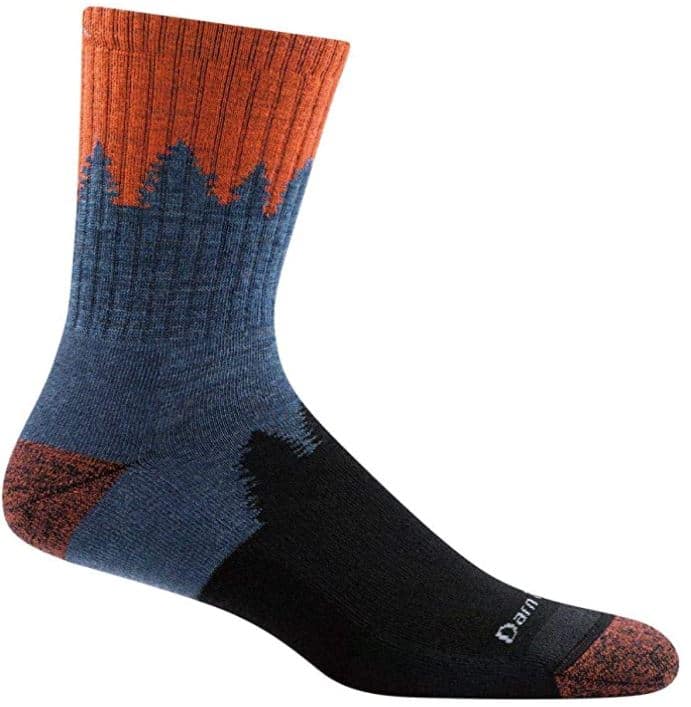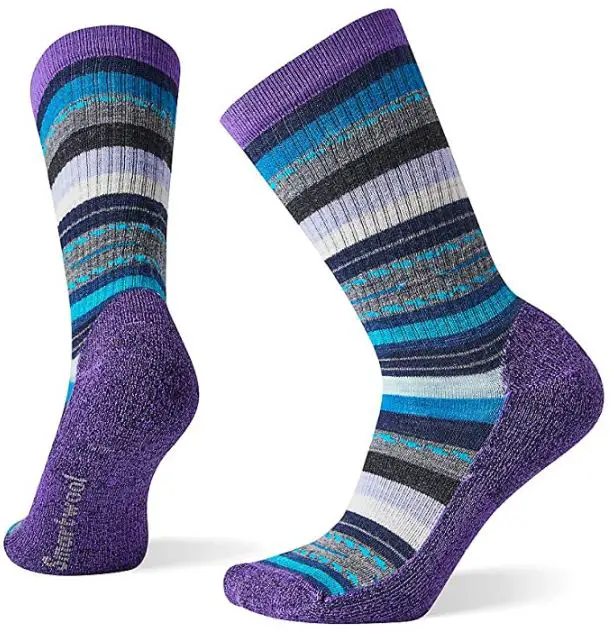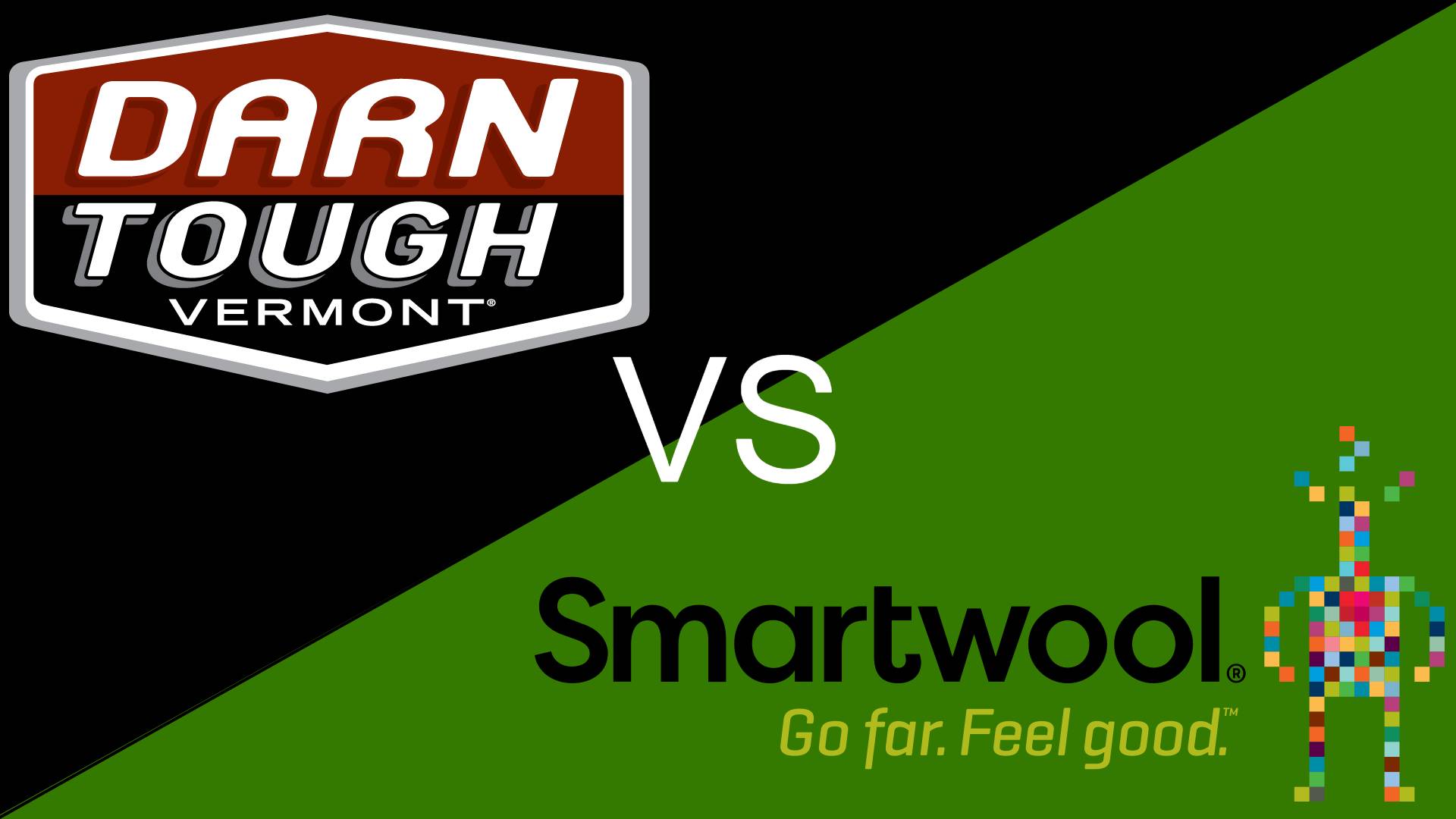Whenever I talk to someone about socks, I often get a strange look when explaining how important they are. For most people, they are just a piece of fabric you put on your feet. In reality, they are much more.
That piece of fabric isn’t there just to make you look cool; it has a few other functionalities. For everyday usage, you should be fine with most kinds of regular socks you’ll find in stores. For extreme activities such as hiking, you reach a point where you need to give socks a thought.
I believe that the socks can be as crucial as the shoes you have during these kinds of activities. Combining them right will result in an excellent experience.
Most reputable socks manufacturers have dedicated products for extreme situations, like hiking. As each one is designed differently and has its pros and cons, my recommendation is to look at the manufacturers first.
There are plenty of manufacturers to choose from, and today’s comparison will include two of them – Darn Tough and Smartwool. Unlike some of the other comparisons I’ve made, there is a bigger difference between these two.
Table of Contents
Darn Tough

The chances that you haven’t heard of Darn Tough are slim. This US-based company has been in business for 40 years, manufacturing and selling premium socks.
Darn Tough’s policy is to produce socks entirely made in its factory with materials from the US only.
The company’s name is associated with some of the best wool-based socks, and I can confirm. Darn Tough gets the material from a special breed of sheep found in America. During the shearing process, the sheep remain unharmed, which gives this company an animal-friendly tag.
Models and options
Darn Tough doesn’t have the type of socks that will get head-turning. It offers plain design with colors that are not very bright, dare I say it, maybe dull. There is some retro vibe to them with the boxy design, if you’re into that. There are a few models that stand out a bit more and have some color to them.
As part of the design, the logo is what I give extra points for. I’m not referring to the actual logo, but the placement and how it works with the socks’ design. It’s in a color that matches the rest of the design, and it’s there, but it doesn’t stick like a sore thumb. I could find one or two models that seem to stand out a bit, and I’d have to start nitpicking.
Speaking of models, Darn Tough offers plenty. In the hiking department, you can choose between 75 models for both genders and kids. There are several height options, as well as material and design. On top of that, most models can be purchased in different color options, meaning that the total number surpasses 100 easily.
Materials
For hiking, most people will root for wool socks, something that Darn Tough does very well. The company has an excellent combination of wool and synthetic materials.
If you’re not a fan of wool, then you can go for some of their synthetic models. The star of the show in these socks is Darn Tough’s polyester called Coolmax. Synthetic materials absorb far less moisture when compared to wool, giving them a greater advantage. This, combined with the excellent breathing abilities, means that they won’t be soaking wet after longer hiking sessions. Even if they are wet or you need to wash them, the combination of materials enables them to dry very quickly.
Guarantee
Premium socks manufacturers aim to sell you high-quality socks, but that doesn’t stop there. Unlike cheaper socks, companies like Darn Tough offer a guarantee for each pair of socks. The lifetime guarantee means that you can return them at any time and get a refund or a replacement pair.
Price
Darn Tough is a premium socks brand, and you can see that from the premium price you pay for each pair. The cheapest hiking socks are $14, and the most expensive are $30. There are also packs with multiple pairs of socks that are good for backpacking if you are looking to save a few bucks.
Smartwool

As the name suggests, Smartwool is a manufacturer that specializes in wool products. Unlike Darn Tough that works only with socks, Smartwool also has shirts, jackets, underwear, and more.
Even though Smartwool hasn’t been in business quite as long as Darn Tough, 27 years is still more than most of its competitors.
In terms of socks lineup, you can only find wool-based socks with some clever knitting technology. Smartwool claims that this technology is responsible for the durable quality and snug fit. The wool comes from sheep bred in the south, in most cases from New Zealand.
As with most companies, the shearing process is harmless for the animals, so animal cruelty is not on Smartwool’s agenda.
Models and Options
For hiking, the design of the socks is primarily irrelevant unless you want to look cool. Even though I’m the type that doesn’t buy socks based on how they look, some do, and this is a big advantage for Smartwool.
The men and woman socks come grouped in several categories, depending on the model and design. Each group has multiple models, which not only vary in design but also in height. On top of that, most of the models come in a variety of colors, depending on your liking. There is also a kids lineup, which consists of only a handful of options.
Looking at it, Smartwool, even though it is an apparel manufacturer, has an extensive range of socks options. Unlike most competitors, the men’s and women’s socks are the same models, but the color options are different, making a choice even more extensive.
Another positive side to Smartwool is the designs. While Darn Tough has more muted designs with some basic and classic designs, Smartwool has very interesting and colorful options. Like most socks manufacturers, the basic designs are there, but as a bonus, there are also designs with different shapes and landscapes.
I’m a huge fan of branding the fits well in the design, and I think that Smartwool nailed it. The banding consists of the logo on the back of the socks and the name at the toes. It is discrete with colors that match the design.
Materials
As the name suggests, Smartwool’s main choice of material is wool. The blend consists of the regular wool and synthetic combination aiming to provide the best of both worlds – temperature regulation, with durability and breathability.
The result isn’t as good as I was hoping it to be. While the wool does its job at keeping the temperature optimal, the synthetics aren’t the best in terms of longevity. The socks won’t wear out in the first several hiking adventures, but they probably won’t last as long as socks from Darn Tough.
Guarantee
This is another weak point of Smartwool. The lack of durability means that you won’t get the lifetime guarantee that Darn Tough has. As a result, you get only 2 years of guarantee.
Don’t get me wrong, this is by no means terrible, as the socks may outlast that period. The problem I have with it is knowing that after those 2 years, whatever happens, I’ll need to buy a new pair of socks.
Price
Unfortunately, I’ll have to continue the trend of bad news for Smartwool as I reach the price. The socks range from $16 to $36 for the most expensive ones. There isn’t a big difference at the bottom and middle of the price range, which is fine. For the most hardcore socks, you will be paying a bit more than other competitive brands.
I wouldn’t say that it’s not worth it, but I will say that Smartwool socks are more expensive, considering what they offer.
Smartwool vs. Darn Tough – Which one to go for?
| Brand: | Darn Tough | Smartwool |
|---|---|---|
 |  |
|
| Best For: | Over 75 Options, high-quality wool, quick drying | Durable quality, snug fit, unique designs, high-quality wool |
| Worst For: | Generic Designs | Short lifespan for hiking |
| Comfort Level: | 9/10 - Very comfortable | 9/10 - Very comfortable |
| Material: | Variations of Merino Wool, Coolmax® Polyester, Nylon, and Spandex | Variations of Merino Wool, Nylon, and Elastane |
| Warranty: | Lifetime Guarantee | 2 Year Warranty |
| Price Range | $14 to $30 | $16 to 36 |
It mostly depends on what you expect from the socks. Darn Tough and Smartwool both have advantages in certain areas and disadvantages in others.
In the durability area, the crown goes to Darn Tough. Not only does it offer a lifetime warranty, but the overall lifespan of the socks is also longer. The blend of materials not too different between both sides. It means that Smartwool is weaker in this department, probably due to the stitching. Another thing I noticed is that over time, the cushioning of Smartwool seems to wear unevenly. At a certain point, it may start to become uncomfortable.
The thinner material does have its advantages, mostly where you want to reduce the weight on your feet. For lighter hiking situations, Smartwool will be just as good as Darn Tough.
In terms of design and models, Smartwool is the winner. The lack of fancy design and brighter colors make Darn Tough not very attractive to the younger hikers. Despite that, Darn Tough doesn’t have as many models and color options as Smartwool.
Price is where things get a bit interesting. If you disregard the high-end hiking socks, both manufacturers are quite close. When you start to reach the higher point, you see that Darn Tough is a better bang for the buck option.
Personally, I’m a fan of Darn Tough, mainly because my hiking adventures are not always light. This is the reason why I’d recommend them if you want a longer-lasting pair of socks.
On the other hand, Smartwool socks are by no means a bad option. With that said, I would recommend them for lighter hiking.
Choosing the right pair of socks
Buying socks is not as simple as choosing the ones you like the most. While for everyday use that may work, for hiking, things are a bit more complicated. There are several things to keep in mind, and I’ll talk about each one individually.
Material
The material of the socks will significantly depend on the activity. Most people will be fine with most kinds of socks, but you need to be a bit picky in hiking situations. Reputable manufacturers have an excellent combination of materials that provide the best experience.
The best possible combination for these situations is wool and synthetics. Wool is a natural fiber that is excellent at temperature regulation. While it does struggle in higher temperatures, this is where the synthetics come into play. Polyester, nylon, and spandex help reduce moisture absorption and keep them long-lasting and elastic.
Height and Weight
During active situations like hiking or running, you’d want to have as little weight on your feet as possible. That is why most people choose lighter shoes or sneakers. It may seem trivial to look at the weight in terms of socks, but it’s not something to disregard.
If you want to go with lighter socks, you will be reducing the weight on your feet, but you will be giving up on comfort or durability. More lightweight socks are thinner, meaning that the cushioning is reduced, and they won’t be as long-lasting as thicker ones. Speaking of, if you decide to put some weight on your feet, you are looking at better comfort and socks that will last longer.
Socks come in various height options, ranging from the no-show models below the ankles to knee-high models. Choosing the height should be determined by the footwear at the moment. Since socks are designed to protect your skin from the inside of the shoes, my recommendation is to get socks that are slightly higher than them. That way, the socks can do their job, and you will avoid irritation or blisters from the shoes.
Comfort
I touched base a bit on this in the weight section. Heavier socks have more cushioning, meaning that they are more comfortable on the feet.
Any kind of strenuous activity can impact the bottom of your feet, which is why thicker socks with better cushioning are a better option.
The material can also play a role in terms of comfort. Natural fibers like wool are softer on the skin and provide better cushioning.
Cushioning aside, the stitching of the materials can also play a big part in comfort. Seamless toes or Y-shaped heels are crucial as they remove the stitching hump in those areas.
Durability
The process of purchasing socks is fun, but doing that too often is not, especially if you are replacing them because they are torn.
Durability is an essential aspect of hiking or other strenuous tasks. The synthetic materials in the socks are designed to make them long-lasting, but they won’t last for 100 years.
When you purchase them, check the reviews and see what people say about them. In general, thicker socks tend to last more than thinner ones, but your mileage may vary.

